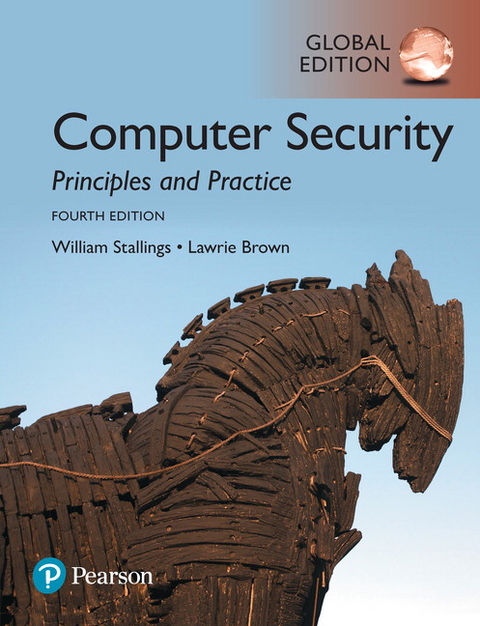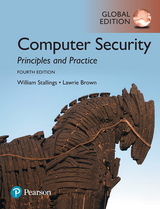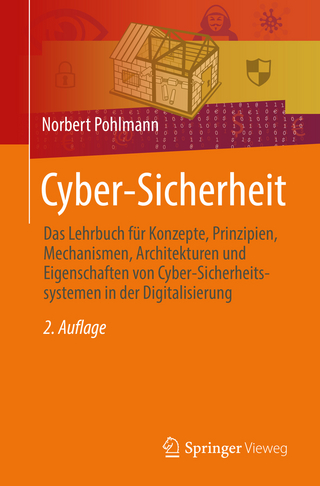Computer Security: Principles and Practice, Global Edition
Pearson Education Limited (Verlag)
978-1-292-22061-1 (ISBN)
Computer Security: Principles and Practice, 4th Edition, is ideal for courses in Computer/Network Security. The need for education in computer security and related topics continues to grow at a dramatic rate—and is essential for anyone studying Computer Science or Computer Engineering. Written for both an academic and professional audience, the 4th Edition continues to set the standard for computer security with a balanced presentation of principles and practice. The new edition captures the most up-to-date innovations and improvements while maintaining broad and comprehensive coverage of the entire field. The extensive offering of projects provides students with hands-on experience to reinforce concepts from the text. The range of supplemental online resources for instructors provides additional teaching support for this fast-moving subject.
The new edition covers all security topics considered Core in the ACM/IEEE Computer Science Curricula 2013, as well as subject areas for CISSP (Certified Information Systems Security Professional) certification. This textbook can be used to prep for CISSP Certification and is often referred to as the ‘gold standard’ when it comes to information security certification. The text provides in-depth coverage of Computer Security, Technology and Principles, Software Security, Management Issues, Cryptographic Algorithms, Internet Security and more.
Online Resources
Preface
Notation
About the Authors
Chapter 1 Overview
1.1 Computer Security Concepts
1.2 Threats, Attacks, and Assets
1.3 Security Functional Requirements
1.4 Fundamental Security Design Principles
1.5 Attack Surfaces and Attack Trees
1.6 Computer Security Strategy
1.7 Standards
1.8 Key Terms, Review Questions, and Problems
PART ONE COMPUTER SECURITY TECHNOLOGY AND PRINCIPLES
Chapter 2 Cryptographic Tools
2.1 Confidentiality with Symmetric Encryption
2.2 Message Authentication and Hash Functions
2.3 Public-Key Encryption
2.4 Digital Signatures and Key Management
2.5 Random and Pseudorandom Numbers
2.6 Practical Application: Encryption of Stored Data
2.7 Key Terms, Review Questions, and Problems
Chapter 3 User Authentication
3.1 Digital User Authentication Principles
3.2 Password-Based Authentication
3.3 Token-Based Authentication
3.4 Biometric Authentication
3.5 Remote User Authentication
3.6 Security Issues for User Authentication
3.7 Practical Application: An Iris Biometric System
3.8 Case Study: Security Problems for ATM Systems
3.9 Key Terms, Review Questions, and Problems
Chapter 4 Access Control
4.1 Access Control Principles
4.2 Subjects, Objects, and Access Rights
4.3 Discretionary Access Control
4.4 Example: UNIX File Access Control
4.5 Role-Based Access Control
4.6 Attribute-Based Access Control
4.7 Identity, Credential, and Access Management
4.8 Trust Frameworks
4.9 Case Study: RBAC System for a Bank
4.10 Key Terms, Review Questions, and Problems
Chapter 5 Database and Data Center Security
5.1 The Need for Database Security
5.2 Database Management Systems
5.3 Relational Databases
5.4 SQL Injection Attacks
5.5 Database Access Control
5.6 Inference
5.7 Database Encryption
5.8 Data Center Security
5.9 Key Terms, Review Questions, and Problems
Chapter 6 Malicious Software
6.1 Types of Malicious Software
6.2 Advanced Persistent Threat
6.2 Propagation — Infected Content - Viruses
6.3 Propagation — Vulnerability Exploit - Worms
6.4 Propagation — Social Engineering — SPAM E-Mail, Trojans
6.5 Payload — System Corruption
6.6 Payload — Attack Agent — Zombie, Bots
6.7 Payload — Information Theft — Keyloggers, Phishing, Spyware
6.8 Payload — Stealthing — Backdoors, Rootkits
6.9 Countermeasures
6.10 Key Terms, Review Questions, and Problems
Chapter 7 Denial-of-Service Attacks
7.1 Denial-of-Service Attacks
7.2 Flooding Attacks
7.3 Distributed Denial-of-Service Attacks
7.4 Application-Based Bandwidth Attacks
7.5 Reflector and Am
| Erscheinungsdatum | 29.04.2018 |
|---|---|
| Verlagsort | Harlow |
| Sprache | englisch |
| Maße | 178 x 234 mm |
| Gewicht | 1340 g |
| Themenwelt | Informatik ► Netzwerke ► Sicherheit / Firewall |
| ISBN-10 | 1-292-22061-9 / 1292220619 |
| ISBN-13 | 978-1-292-22061-1 / 9781292220611 |
| Zustand | Neuware |
| Haben Sie eine Frage zum Produkt? |
aus dem Bereich




